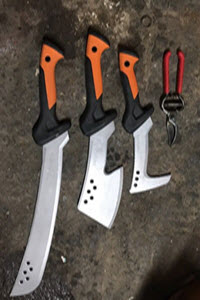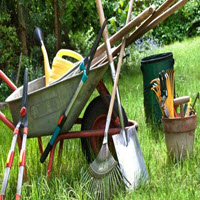Winter is the time for gardeners and the garden to rest. During this slower gardening period, take the time to check and prepare garden tools for the tasks that begin in spring. Repairing, cleaning and sharpening garden tools now will make them easier and safer to use, plus it will preserve your investment.
An annual inspection of garden tools is recommended to keep them in working condition. Begin by determining whether the handles need repair and if the tool is sharp and sturdy. Wood handles can be revived by cleaning, gentle sanding and then rubbing on boiled linseed oil. Apply a coat of oil with a rag and let it soak in for five to 10 minutes, then reapply until the wood no longer absorbs the oil. Let it cure for eight hours before using the tool. Always wear gloves when working with chemicals. If the handle is cracked, look for a replacement handle. This is often less expensive than purchasing a new garden tool.

Remove any rust with a wire brush. If the rust is significant, soak the tool in pure vinegar for a few hours to overnight. Brush off the remaining rust with a wire brush or steel wool rated 000 or 0000. Repeat if needed. The best way to prevent rust is to always dry tools prior to storing them. Laying them on a warm surface in the sun for a couple of hours will suffice. Coating steel surfaces with lubricating oil also helps prevent rust.
There are two types of pruning mechanisms: bypass and anvil. A bypass pruner cuts when one blade “passes by” the other. Anvil pruners cut when the blade presses against a flat lower plate. Bypass pruners are the preferred tool for pruning live plants, while anvil pruners work best when cutting dry plant material.
To inspect pruners, look at the blades. If there are divots or nicks, the tool might need to be professionally sharpened. The divots are the result of pruning a tree or shrub that is too big for the tool. Typically, hand pruners can cut wood with a diameter of 3/4 inch while loppers can cut up to 1 1/2 inches. For branches larger than 1.5 inches, use a pruning saw or a rope saw. Check the pivot on the pruning tool for wobbliness and smooth motion. Tighten if needed.

